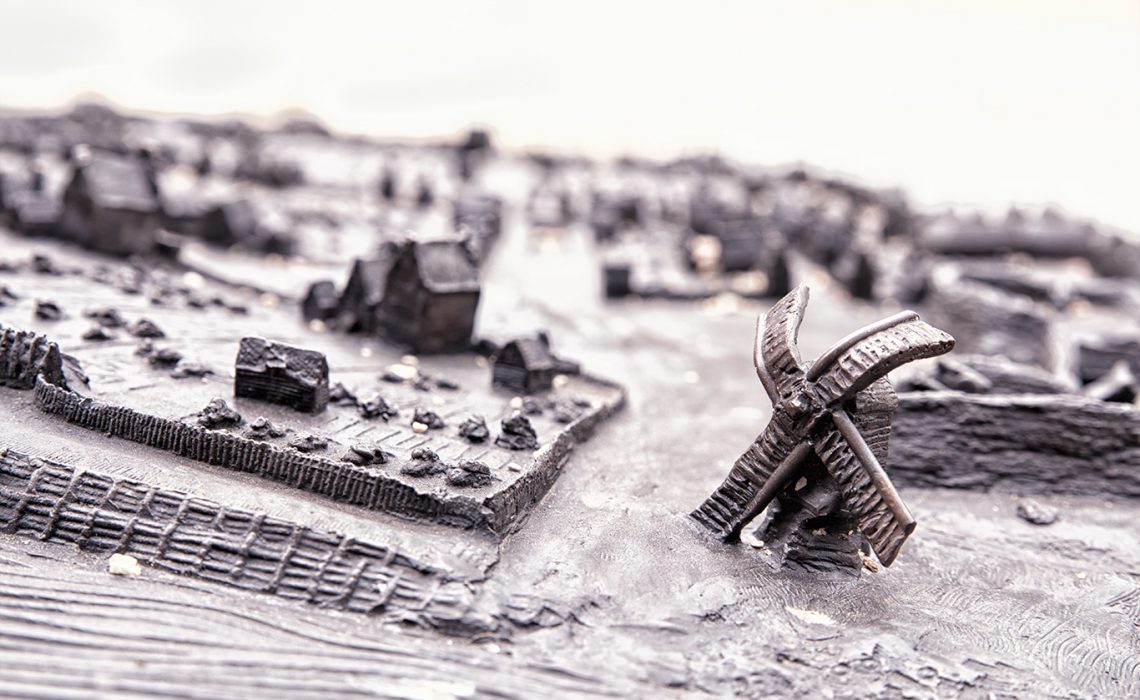From New Utrecht to Harlem and from Fort Gansevoort to the New York Yankees. Everywhere in New York there are connections with the city’s Dutch past. Not only a city that never sleeps, but also a city with two names: New York and New Amsterdam. And I am looking for the latter.
My forehead is sweaty, my feet feel like I’ve walked for miles on a bed of nails, and a taxi is honking so loud that my ear snaps shut. But, here I am.
Sometimes the link with the Netherlands is obvious. For example, there is the very long Amsterdam Avenue and of course we also know the Holland Tunnel that connects Manhattan with New Jersey. But did you know that Broadway was actually Heere Straet, and Pearl Street was Parelstraat? Entire neighborhoods have also been named after Dutch cities such as Brooklyn to Breukelen, Bushwick to Boswijck and Flushing to Vlissingen. But to see what’s left of New Amsterdam I don’t have to be in these neighborhoods, I have to go to Lower Manhattan for this.
Lower Manhattan
It is 36 degrees and the asphalt reflects the sun so that not only my nose but also my double chin burned. Still, nothing prevents me from going to Lower Manhattan in this weather. Lower Manhattan is the region in the southernmost part of the island of Manhattan. It covers Chinatown, Little Italy, Lower East Side, Meatpacking District, Greenwich Village, Nolita, East Village, and parts of SoHo.
Lower Manhattan is the place where the Dutch founded New Amsterdam in 1626. Since then, the area has become the financial and tourist heart of New York. Fort Amsterdam once stood here, now the area is filled with towering apartments and businesses. In addition to typical Dutch streets and narrow houses, there were canals, windmills and a wall. A wall where Wallstreet can now be found.
Wallstreet
Despite the fact that tourists only photograph one thing on Wall Street, the Stock Exchange, New York has tried to give this place something historical. In addition to the name of the street, a number of extensive wooden plates in the ground indicate that a wall once stood here. A wall that separated the city from the rest of the island, then pasture. Without knowing it, hordes of tourists wear their shoe soles on the spot where the wall of New Amsterdam once stood.

They don’t look at the picture on the ground for a second that refers to the history of this place. Logical, of course, you don’t go to New York for its history. Then you go to Rome or Paris. You go to New York for the entertainment and a few holes in the ground that indicated a wall are of course not part of that. I get it.

Fort Amsterdam
After a somewhat disappointing start, my search takes me to Broadway. Ever de Heere Straet. I stare at the Broadway sign and wonder if the Dutch who came here in the 17th century could ever have believed that New Amsterdam would become what it is today. A lady taps my shoulder. “Are you lost, Darling?” “No”, I explain to her “and still a little”. She looks at me a bit distracted and I don’t blame her. I explain to her that I am looking for New Amsterdam. “Hmm, then you have to be on Amsterdam Avenue” she responds. I tell her that’s not the New Amsterdam I’m looking for and that’s how we start talking about where New York once started. Had it not been for the English, New York would still have been called New Amsterdam. Madam was so interested that she wanted to walk with me to Fort Amsterdam. And so it happened.

Fort Amsterdam was where Battery Park is now. A beautiful piece of green with a view over the Hudson. The Hudson is named after the English skipper who sailed for the Dutch VOC and discovered Manhattan. From here one sails to the Statue of Liberty, or another island. Fort Amsterdam was designed by Cryn Fredericks and was built from hard-packed earth (kind of adobe). Earthworks could absorb the cannon fire without collapsing, like stone walls. Much of the construction was probably done by victims (slaves) of the Dutch West India Company. Here too, almost nothing can be found about the Dutch history of New York, except on a flagpole donated by the Dutch government. Madam promises to read me more about New York history and leaves me alone again from here.



A little further on I find a small piece of New York history. On New Amsterdam square there are a few stones on the ground with stories about the creation of the city. We wipe the stones to read what it says. The stories are beautiful, from Peter Minuit who turned New Amsterdam into a real city to the exchange with the English who renamed it New York. According to the stones, New York would never have become so multicultural without Dutch influences. The Dutch had their own way of governing, they let everyone in. In addition to the Dutch, French, Germans, English and Norwegians were also invited to come and live in the new country. This soon created a mixture of cultures, but also religions and languages. The English were not used to this and found it difficult to live together with different religions and cultures. Yet they succeeded. But would New York ever be what it is today without the Dutch?

There is also a map with houses, canals, Fort Amsterdam and a windmill. But this one also looks like it hasn’t been looked after in years. Gravel and sand fill the streets and canals of New Amsterdam. And again it hurts a little bit to see this.
The beginning
Even now I will not give up and a few meters from New Amsterdam Square is perhaps the most important place in New York. On the corner of Pearl Street and Coenties Alley, a city inn was converted into Stadt Huys. The city of New York takes February 2, 1653 as the date of its political foundation and that happened in this city inn. This was New York’s very first City Hall, and so it became the center of government and political life in the colony. The inn has always functioned as a town hall until it was declared unsafe in 1697. Now only some lines have been drawn on the ground that indicate where the Stadt Huys has stood, a number of wells have been opened and there is a stone with the story about the Stadt Huys. A small tribute to the beginnings of this metropolis.

New Amsterdam was only a small part of Manhattan and yet such an important beginning. Perhaps Manhattan would never have been what it is today without Dutch influences. And yet there is so little left of it. What if we never left. Would it have become as successful as it is now?

